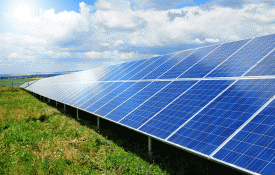2015 was a banner year for U.S. commercial real estate whether you were an investor, developer, owner/operator, or construction contractor. Through the first half of 2015, the U.S. saw $232 billion of investment sales across property types, outpacing peak, pre-recession investment levels from 2007. Seven of the 10 most active global markets for investment sales were in the U.S. Through the first half of 2015, $54.1 billion in commercial real estate investment capital was raised from 96 separate funds. North America focused funds raised $20 billion, constituting roughly 46% of all volume.
With Foreign Investment in Real Property Tax Act (FIRPTA) relief signed into law last December, there should be more foreign capital entering the U.S. markets, particularly with the relief provided to foreign pension funds. Of the $78 billion in foreign investment (approximately 16% of U.S. investment activity), only $7.5 billion was from foreign pensions.
Despite all of this positive news, the industry continues to have some insiders suggesting that a “significant” market correction may occur in 2016. Here is why, we believe, they are wrong.
[To read more of Scott M. Sach’s thought leadership click here]
Multifamily: Strong and Getting Stronger
The multifamily sector has, for several years, been a shining star for commercial real estate. This should be the case once again in 2016 as millennials continue to be the catalyst for America’s fundamental shift away from home ownership and towards renting. The Harvard University study, “State of the Nation’s Housing 2015,” reports that, of the estimated 22 million households that will be formed from 2010-2030, 59% will rent and 41% will own. Today, 64% of American families own their homes (although this number has been steadily dropping).
According to the Bureau of Labor Statistics, nearly 2.7 million jobs were created in 2015. As both the economy and the job market continue to improve, so should the prospects for the office sector in 2016.
Multifamily fundamentals today have never been better. Nationwide, occupancy rates are at 94.6%. Renewal rates for third quarter 2015 were 5.4% higher than the previous year. Effective rents grew by 5.9%. At the end of the second quarter last year, there were 421,000 multifamily units under construction with multifamily starts at the highest level since the late 1980s. None of the major rental markets are seeing systemic over-building, and rental demand and absorption continue to outpace supply.
On the investor side, we saw a huge shift toward institutional investors in 2015 fueled by institutional property managers, REITs, pension funds, and private equity funds. Nearly three million rental units are currently owned by institutional investors.
Continued Job Growth Will Fuel Office Sector
According to the Bureau of Labor Statistics, nearly 2.7 million jobs were created in 2015. As both the economy and the job market continue to improve, so should the prospects for the office sector in 2016.
With occupancy rates and rents in many markets reflecting increases, foreign demand for acquisitions of US office properties had increased by 57% through the middle of 2015 to the highest level seen since 2007. Chinese and South Korea investors accounted for most of the activity, focusing on key urban hubs such as New York, Boston, Seattle, and Washington, DC. But with secondary markets trading at discounts of 200 basis points to primary markets, the office sector is also hot in markets like Atlanta, New Jersey, Philadelphia, San Diego, and Phoenix, with the focus being on core Class A assets.
Net Lease Activity Will Continue Its Ramp-Up
Through the third quarter of 2015, the net lease sector was up 16% year over year in transaction volume with 2015 on pace to be the highest transaction volume on record. REITs have typically been the largest buyers of net leased assets. However, institutions were twice as active as REIT-buyers year to date.
Retail sale leasebacks increased 179% year over year, which is reflective of monetization strategies being adopted by retailers.
Foreign investment in net leased segment quadrupled since 2013. Spain, South Korea, UK, Brazil and Australia are the most active.
Fed’s Conservative Monetary Policy Will Calm Investors
To no one’s surprise, the long-anticipated hike in interest rates finally happened on December 16, 2015. The Federal Reserve raised its key interest rate from a range of 0% to 0.25% to a range of 0.25% to 0.5%.
[For more on CohnReznick’s approach to Corporate Accounting click here]
While an interest rate increase is always of concern to the real estate markets, funds had been anticipating a modest increase for some time– and prepared for it. Investors’ return expectations were addressed, investment strategies were strategically modified, and capital raising goals and sources were likewise reexamined and adjusted, when necessary.
For the commercial real estate industry, despite some global turmoil and market uncertainty, 2015 turned out to be a year of growth and a year in which most expectations were met—a year in which opportunities recognized and seized yielded phenomenal benefits to savvy operators and entrepreneurs. While caution is always prudent, there is no reason not to remain optimistic looking forward into 2016.














































